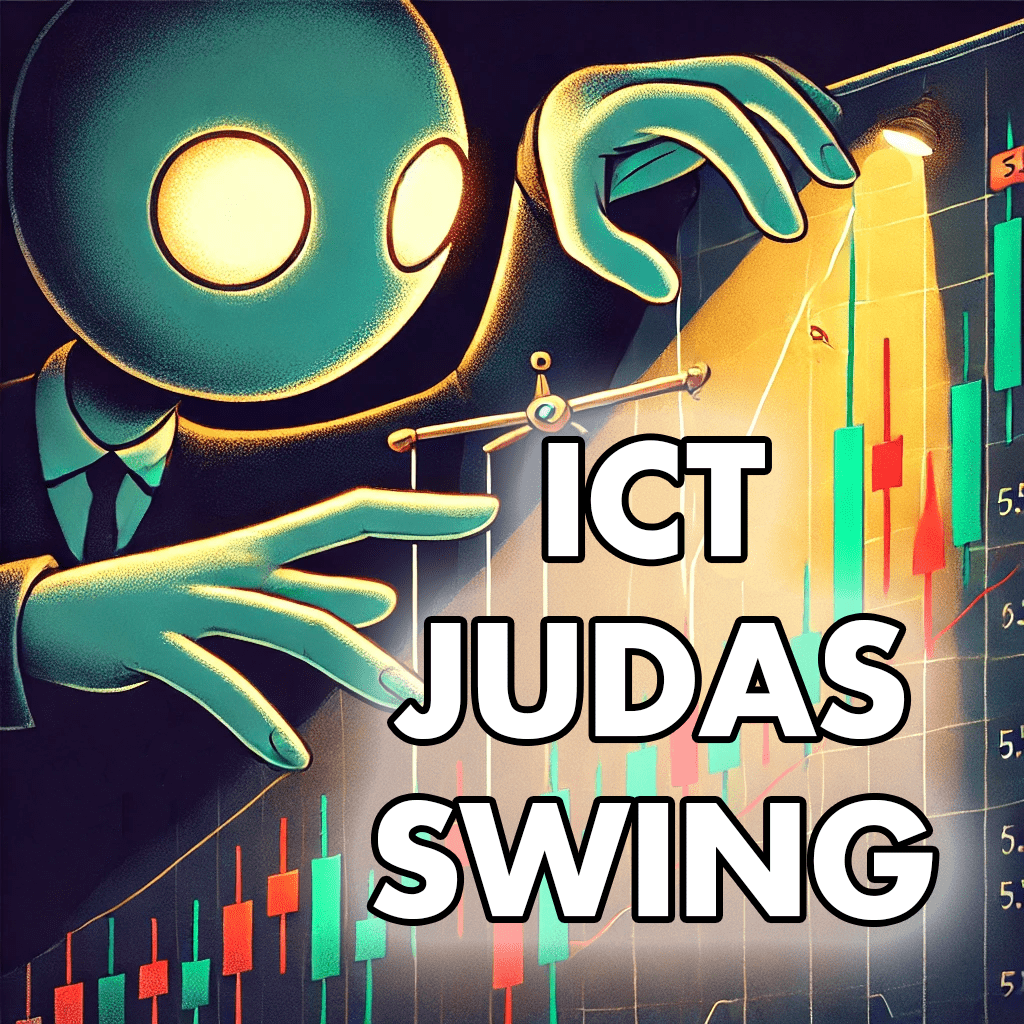ICT Judas Swing: Understanding This Smart Money Trap in Trading
Table of Contents
Toggle
What Is the ICT Judas Swing?
The ICT Judas Swing is a deceptive move in the market that occurs during specific timeframes to lure retail traders into taking positions in the wrong direction. Named after Judas Iscariot, the infamous biblical figure who betrayed Jesus, this move is a classic Smart Money Concept (SMC) designed to trap retail traders.
The Judas Swing often occurs at the start of a trading session, particularly during ICT Killzones such as the London Open or New York Open. It begins with a false breakout in one direction, tricking traders into entering early, only for the price to reverse sharply in the opposite direction.
For traders who follow Inner Circle Trader (ICT) Concepts, recognizing the Judas Swing is essential to avoid retail traps and align with institutional order flow.
Why Does Smart Money Create the Judas Swing?
Smart money (banks, institutions, and hedge funds) creates the Judas Swing to manipulate retail traders. Here’s why:
- To Gather Liquidity:
Retail traders often place stop-loss orders above resistance or below support levels. The Judas Swing targets these stop-loss clusters to trigger liquidity for smart money to enter their positions. - To Induce False Breakouts:
The initial move of the Judas Swing looks like a breakout, prompting retail traders to jump in. Once enough liquidity is collected, the market reverses, leaving retail traders trapped in losing positions. - To Create Favorable Entry Points:
Smart money uses the Judas Swing to enter their positions at better prices after inducing retail traders to take the wrong side of the trade.
Understanding the motives behind this move can help traders avoid getting trapped and instead trade in alignment with smart money.
How to Identify a Judas Swing on the Chart
Spotting a Judas Swing involves observing price action during key trading sessions, particularly in the London Killzone (2 AM to 5 AM EST) and New York Killzone (8 AM to 11 AM EST). Here’s how to identify it:
- Look for an Early False Move
The Judas Swing typically happens within the first hour of a trading session. Watch for a sharp move in one direction that breaks a key level of support or resistance. - Identify a Reversal
After the initial move, price will often reverse sharply in the opposite direction. This reversal is the true direction of the market for the session. - Watch for Key Levels
The Judas Swing often targets liquidity pools, such as previous day’s highs or lows, fair value gaps (FVGs), or order blocks. - Confirm with Time and Price Theory
Use ICT’s Time and Price Theory to confirm that the move aligns with expected trading times and price levels.
Key Timeframes for Judas Swings
The ICT Judas Swing is most likely to occur during specific trading sessions, known as killzones in ICT concepts:
1. London Killzone (2 AM to 5 AM EST)
The London Killzone is one of the most active trading sessions. The Judas Swing often appears here, creating a false move before the real trend is established for the day.
2. New York Killzone (8 AM to 11 AM EST)
The New York Killzone is another prime time for Judas Swings, especially when it overlaps with the London session. Watch for price reversals around major economic news releases.
How to Trade the ICT Judas Swing
Trading the Judas Swing involves waiting for the false move to occur and then entering in the opposite direction once the market shows signs of a reversal. Here’s a step-by-step guide:
- Wait for the False Move
- Don’t rush into trades during the first hour of the session.
- Watch for price to break a key level of support or resistance.
- Identify Liquidity Pools
- Look for stop-loss clusters or previous highs/lows that the false move is targeting.
- Wait for a Reversal Signal
- Confirm the reversal using candlestick patterns, order blocks, or fair value gaps.
- Enter in the Opposite Direction
- Once the reversal is confirmed, enter your trade in the opposite direction of the initial move.
- Set Your Stop-Loss and Take-Profit
- Place your stop-loss above or below the liquidity pool that was targeted.
- Set a realistic take-profit level based on key support/resistance levels or order blocks.
Common Mistakes When Trading the Judas Swing
- Entering Too Early
Many traders fall for the initial false move and enter too soon. Patience is key when trading the Judas Swing. - Ignoring Killzones
The Judas Swing is most effective during specific timeframes. Don’t look for it outside of ICT killzones. - Misidentifying Liquidity Pools
Ensure that you’re accurately identifying liquidity pools, fair value gaps, and order blocks to confirm your setups. - Not Using Risk Management
Always use proper risk management to protect your capital in case the trade doesn’t go as planned.
Conclusion: Mastering the Judas Swing to Avoid Retail Traps
The ICT Judas Swing is a critical concept in Smart Money trading that can help traders avoid common retail traps. By understanding how and why smart money creates these deceptive moves, you can trade more confidently and align with institutional order flow.
Remember, mastering the Judas Swing requires patience, practice, and a solid understanding of ICT concepts. Use this knowledge to improve your trading accuracy and avoid getting caught in false breakouts.
Private Coaching
Although ICT has free content on his YouTube channel, it can be overwhelming to browse through the countless hours of videos. Sometimes, a seasoned personal trading coach is what you need to speed up the learning process and provide insights that can only be gained through years of experience. If this sounds interesting to you, book your free discovery session with R2F Trading! We’ll discuss your goals, assess your current trading strategy or help you develop one yourself, and create a personalized plan to get you trading like smart money.
